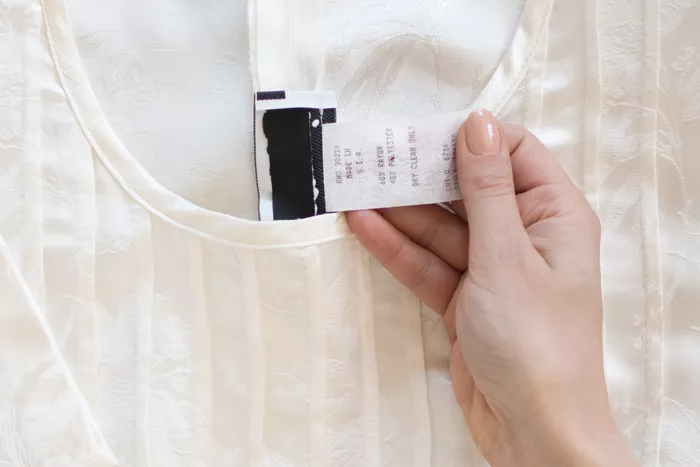Damask is a reversible fabric most often used for linens, drapery, and upholstery; however, it can also be used for clothing such as jackets and formal wear. Damask designs are so beautiful that you can find the patterns replicated in wallpaper and do-it-yourself craft stencils.
How to Wash Damask Table Linens
As with any fabric, the care depends upon the fiber content. Some damask fabric can be successfully washed while others (silk fibers) may need to be dry cleaned. If you are not certain of the fiber content or the item does not have a care label, consult a laundry professional at your local dry cleaning shop before attempting to wash damask at home.
Most damask table linens are made of linen or cotton fibers and can be washed at home. Since much of the beauty comes from the long floating fibers, these fabrics should be hand washed or washed using a washer’s delicate cycle with cool water and a mild detergent. If using the delicate cycle, place the damask fabric in a mesh laundry bag to prevent the possibility of snags.
Avoid harsh detergents and chlorine bleach that can weaken delicate fibers to remove stains like punch spills. If you have damask fabrics that have yellowed, the safest way to whiten and brighten them is to use an oxygen-based bleach. Mix a solution of warm water and the oxygen-based bleach (OxiClean, Clorox 2, Country Save Bleach, and Purex 2 Color Safe Bleach are brand names). Follow the package directions as to how much product to use per gallon of water. Add the damask and allow it to soak for at least two hours; overnight is best. Rinse well and air-dry or tumble on low heat. Oxygen bleach is slow-working but very gentle and to safe to use on all types of fibers except silk and wool.
Always pretreat any specific stains such as oil or candle wax following stain removal tips before washing. The damask table linens can be tumbled dry onto medium-low heat. Always remove the linens while slightly damp for easier ironing.
:max_bytes(150000):strip_icc():format(webp)/care-for-damask-linens-and-clothes-2146313-03-dcb5da2f2fc040769c40473c66d54b09.jpg)
How to Care for Damask Garments
For damask garments, always follow the care label for cleaning. While the fiber content may allow for home washing, the garment may have an inner structure such as linings or interfacings that require dry cleaning and can be destroyed or distorted if washed.
Damask garments made from silk or wool fibers should be hand washed or dry-cleaned following care label directions.
:max_bytes(150000):strip_icc():format(webp)/care-for-damask-linens-and-clothes-2146313-04-552fb67d22744d16ad0cd071aa814c53.jpg)
How to Iron Damask Fabrics
- Follow the fiber content label for the correct temperature for ironing.
- Always use a pressing cloth between the iron and the damask fabric to prevent the snagging of the looser, floating threads.
- Press on the wrong side to prevent flattening of the floating threads and only do a small touch up on the other side.
- Do not create sharp creases on folds to prevent broken threads.
:max_bytes(150000):strip_icc():format(webp)/care-for-damask-linens-and-clothes-2146313-05-888dde191b0e458eab8c8c9ae666dd85.jpg)
How to Store Damask Linens
The floating fibers on damask can easily snag on rough surfaces and vintage damask fibers can break. When storing damask linens, store flat, or gently roll to prevent harsh creases.
For damask garments, hang or create soft folds with acid-free tissue paper before storing.
:max_bytes(150000):strip_icc():format(webp)/care-for-damask-linens-and-clothes-2146313-06-02e17852b3064568942f424018cfb75e.jpg)
What Is Damask and How Is It Made?
Damask was originally made from silk thread woven with a single warp and weft yarn with the warp-faced pattern in a satin weave with floating threads and the weft-faced background in a sateen weave. The weaving technique produces a reversible fabric with an elaborate glossy pattern against a matte background. Originally, the term damask referred only to the silk patterned fabric. Today, the term damask refers to the style of weaving even if the fabric is made from another fiber.
The weaving of damask is one of the oldest weaving techniques known. The name damask comes from the Arabic language and is a derivation of the name of the city of Damascus where it was woven from single color silk threads in the early Middle Ages.
As the technique of damask weaving moved throughout Europe, several colors and metallic threads were added. Weavers began to weave damask fabric in wool and linen as well as silk. The patterns may have a botanical theme, feature animals or landscape scenes, or simply be geometric in design. While Damascus remained a well-known center for the production of damask, Italy soon became famous as well for the manufacture of damask.
Around 1800 with the invention of the Jacquard loom that used punch cards to automatically create the designs, damask became more accessible to consumers. Today’s damask is woven on a jacquard-weave loom with computer controlled designs and can be made of linen, silk, cotton, wool, or even synthetic fibers. Damask is still an expensive fabric to produce, because the dense weave requires a large number of fibers per square inch.
When purchasing damask fabric by the yard for a project, measure carefully if the pattern repeat is important to the final look. The yardage should be bought from a single bolt of fabric so that the color and weave will match exactly.

:max_bytes(150000):strip_icc():format(webp)/care-for-damask-linens-and-clothes-2146313-hero-084207ee6b244123a1ff09c73c63a4b9.jpg)

